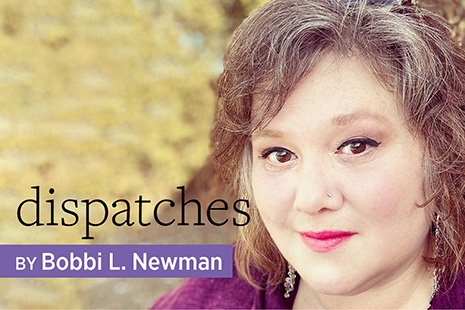
What can a library do to facilitate optimum health and wellness for its staff? Resilience narratives often place the responsibility on employees to recover from poor working conditions through their individual efforts on their personal time, but this fails to address the larger institutional and societal factors that contribute to an unhealthy work environment. A few recommendations can help you address the problem at its source.
Physical space. All library staffers should have an ergonomic work station. If you have access to an external ergonomics evaluation, arrange for your library to have one. Be prepared to purchase the equipment and furnishings necessary to meet the resulting recommendations. Ideally, this would come from the library budget, but you may need to consider other sources of funding, such as applying for grants or fundraising.
If staffers have their own offices, allow them to control the temperature in that space, if possible. In shared spaces, try to come to a consensus on temperature. It is more than a preference. Hormonal changes and medications can affect how warm or cool we feel. No one should be singled out for trying to maintain their comfort level.
Be sure any policies or practices you develop take into consideration the cultural norms about what foods are allowed. Banning “smelly” food is problematic because it’s subjective and may unfairly target people of color and nondominant cultures. Consider creating a workplace policy or culture that encourages everyone to eat in the breakroom or in another location besides their desk or a shared workspace.
Salary. Management may need to evaluate salaries both in terms of wages for the area and industry. It’s important to remember that both those staffers who hold advanced degrees in library science and those who don’t are paid based on limited budgets. Closely examine staff salaries for equity and adjust them accordingly. Evaluate and revise hiring practices to ensure fair and equal wages in future hires.
Vacation and sick time. One of the takeaways from the pandemic is the importance of staying home while sick. Libraries can encourage staffers to do this by providing ample sick time in a separate pool from vacation time. This way, employees do not need to feel the need to come to work sick to save their vacation time. Create a culture where using vacation time is expected as a matter of self-care. It should also be policy to completely disconnect from work—no expectation of responding to emails, texts, or phone calls—during vacations.
Telecommuting and flex schedules. Policies around remote work and flexible schedules require an honest look at the responsibilities of staffers and the reason managers might feel that they must be in the building during a strict set of hours to complete their work. Start by having frank discussions with colleagues about their interest in remote work and flex scheduling. Involve them in the process. Remember, both policies should be available to all employees, not just those who are caregivers.
Emotional and invisible labor. Library administration, policies, and practices should acknowledge that these types of labor exist and disproportionately affect some staff. Provide access to private space to process emotions away from coworkers and patrons. Set expectations that staffers may take time away from service desks after difficult encounters with patrons. Creating a workplace that truly embraces diversity, equity, and inclusion will help reduce the burden of emotional labor on the job.
Resilience narratives often place the burden of poor working conditions on employees.
Many of these changes mean letting go of social and cultural norms in libraries and in the US around how managers and organizations treat workers. You may need to spend time sitting with these recommendations and thinking about how to implement them. It will be helpful to recruit allies both in changing the organizational culture and official policies and practices. You know your organization best and which approaches will be more successful when advocating for changes.
Adapted from Fostering Wellness in the Workplace: A Handbook for Libraries (ALA Editions, 2022).


